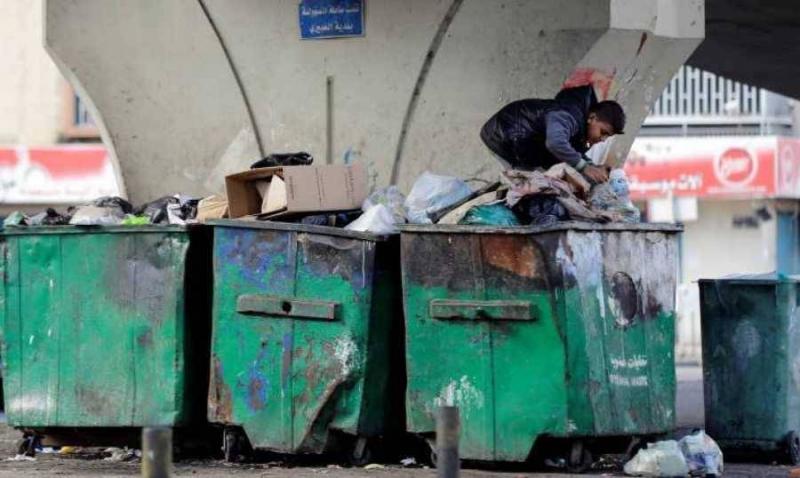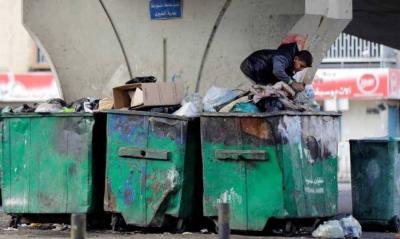Periodically, the World Bank, alongside other institutions, issues a study on poverty in Lebanon (and other countries), defining poverty lines based on consumption costs. Those with a consumption capacity below this line are classified as poor. In practice, populations are categorized according to mathematical rules, while in reality, it is often difficult to distinguish between someone deemed poor due to an income below $2.9 per day and another person with an income not exceeding $3 per day who is not classified as poor. According to reports from organizations, poverty is an illusory line that separates social classes, the majority of whom live on its upper and lower margins. These constitute the majority of society that the World Bank and similar international organizations urge to deal with as needed. The absence of development policies motivates such classifications aimed at reducing social spending and acclimating people to begging.
In June, the World Bank defined the poverty line in Lebanon based on individual annual consumption. This line delineates between the poor and the non-poor, whereby those consuming essential goods valued at less than 53.4 million Lebanese pounds annually are considered poor. A conversion rate was applied based on the US dollar's value in January 2023, when the average was 50,000 pounds, meaning that anyone whose annual expenditure is less than $1,068, or $2.9 per day, is classified as poor. If a family of four has a monthly income below $350, it is classified as poor. Notably, this classification does not consider housing costs and essential services like electricity, water, phone, and education, as mentioned in "Al-Akhbar."
In a summary of the study, it is revealed that poverty, according to the lines drawn by the World Bank, has intensified in Lebanon following the banking and monetary collapse. The study concluded that households in Lebanon now consume one-third of the quantity of meat (both red and white) that they consumed ten years ago. In contrast, household consumption of grains has increased by 20% due to their lower prices compared to meat. The study highlighted that official Lebanese statistics are outdated, having ceased to study the market in 2012, during which prices multiplied fifteen times before the economic crisis. Interestingly, the criticism that the World Bank directed toward official statistics fell into its own trap, as it published poverty lines parallel to stating that the 2022 figures would no longer be valid by 2024. Exchange rates, dollarization of prices, and the ongoing collapse of the lira have all rendered the dollar's value unstable, despite it being a currency of nearly fixed value in Lebanon.
This situation raises fundamental questions regarding the effectiveness of poverty lines and the distribution of families above and below them. Social researcher Adib Naimah stated: "In general evaluation, the weakest point in the study is the poverty line." He believes that defining poverty only by its extreme forms is not true poverty but a premeditated decision to reduce the number of poor to allocate a specific amount of money, which is not a realistic approach but rather arithmetic operations. "When we say poverty line, it means dividing the poor into segments so that assistance doesn’t cover all of them,” he questioned the meaning of restricting extreme poverty to a specific demographic despite the lira losing 95% of its purchasing power, along with the families’ consumption ability.
Even the dollar has changed, says researcher Kamal Hamdan, a contributor to the World Bank study. For him, the value of the dollar in 2022 was high. Now, after dollarization and the readjustment of fees based on market exchange rates, the market value of the dollar has decreased. What impact do these changes have on poverty? He answers: "The reflection of changes on the poverty line and its alteration, explaining that the changes regarding prices have begun to increase faster than changes in the dollar." Beginning in November 2023, prices started rising more rapidly than fluctuations in the dollar, and what is happening is the exact opposite of what occurred during the study years, namely 2022 and 2023. For instance, parking fees in ordinary areas were one dollar before the crisis, or 1,500 pounds; today, it ranges between $1.5 and $2.5.
There is a need to revise theories concerning the establishment of the poverty line as it is broader than just food; it includes transportation, water, and education. According to Naimah, dividing the population according to a mathematical equation related to income and consumption—i.e., drawing a poverty line—serves the aid agenda that tries to define a specific segment for assistance. This theory views the poor based on the volume of assistance intended for distribution; if it increases, the poverty line rises, and vice versa. He also refers to statements from international officials talking about reducing the size of assistance, which means a necessity to narrow the targeted category and thus further lower the poverty line. Conversely, 75% of Lebanese households need monthly assistance to cover income shortfalls regarding expenses, highlighting their need to regain their purchasing power fundamentally.
In this context, Naimah was not surprised that the poverty rate reached 33%, as mentioned in the World Bank study, since previous official studies over the past 30 years indicate that a third of the population in Lebanon is poor, and as the economic situation improves, poverty decreases to encompass a quarter of the population. Thus, Naimah believes that there is a need to reassess the entire prevailing theory of drawing a poverty line, including food among the determinants of poverty. For him, this is a form of exclusion, and if we exclude food, poverty in Lebanon is broader; it also includes transportation, water, and education, warning against relying on mathematical equations determining beneficiaries of assistance among the poor, likening them to entrance exams that exclude those in need from among the qualified, redirecting the matter again to the amount of financial resources allocated for distribution among the poor, necessitating the targeting of certain segments—reducing these means targeting the poorest and leaving the rest more vulnerable to sinking deeper.
Regarding addressing poverty, Naimah sees the solution lying in changing the structure of thought and dynamics that generate poverty, insisting that action should not be done individually or solely focus on narrowing the poverty and deserving assistance segments. According to the World Bank study, 32% of poor households during 2022 and 2023 do not consume adequate food, and 83% of families rely on purchasing less preferred, cheaper goods at least once a week. The study also indicated that the poorest families were forced to reduce the size or number of daily meals or borrow food, or that an adult member of the family would restrict their food intake to nourish their children. The poverty rate in Beirut is indicated at 2% according to World Bank criteria, while it has reached 62% in Akkar according to "Al-Akhbar."




